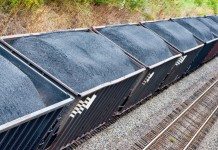
FEW JSE stocks have swung as wildly as Thungela. From a 52-week high of R140.81 in February 2025 to barely R81 by October, the share has lost more than 40% of its value in just eight months.
The market has clearly turned its back on coal, and on Thungela, believing that the post-Ukraine boom is ancient history. Yet beneath that price collapse lies a company still generating R3bn-R4bn in free cash flow every year and sitting on around R6bn of net cash — equal to half its market capitalisation of R12bn. In other words, investors are valuing one of the world’s lowest-cost coal producers at barely two times annual cash generation.
The disconnect between perception and performance is stark: Thungela’s fundamentals haven’t fallen nearly as far as its share price. This is less a story of decline than of deep mispricing — and a reminder that markets often mistake narrative for reality.
The market is behaving as if coal’s glory days are gone for good. Yet the fundamentals tell a more grounded story. Asian demand remains resilient: India and Southeast Asia are still commissioning new coal-fired power plants, while China continues to expand its high-efficiency fleet for grid stability.
On the supply side, ESG constraints have gutted the global project pipeline, leaving a thinner, costlier market. The marginal ton of seaborne coal now costs around $75-$85 to produce, a natural floor supported by high operating and capital costs in Indonesia and Australia.
Against this backdrop, Thungela’s operations sit comfortably in the bottom quartile of the global cost curve, with an average free on board cost of roughly $60-$70 a ton. Even at today’s normalised prices, the company still earns healthy margins that most competitors can only envy.
Investors have convinced themselves that Thungela’s best days are behind it — that as flagship mines like Goedehoop and Isibonelo wind down, the company’s cash generation will inevitably shrink. But this view ignores the quiet transformation happening beneath the surface.
New projects such as Zibulo North and Elders are set to sustain South African output at roughly 14Mt-15Mt a year well into the 2030s, effectively replacing volumes from older operations. Meanwhile, the Ensham acquisition in Australia — a long-life, low-cost mine with rail access to Gladstone Port — has added a geographically diversified cash engine. Ensham contributed about R676m in profit in its first full year, proof of immediate value creation. With these additions, Thungela’s average remaining mine life now stands at roughly 12 to 14 years, among the longest of any listed pure-play coal producer.
Markets have also priced Thungela as though South Africa’s rail system is permanently broken — that Transnet’s woes will cap exports forever. It’s true that rail has been the company’s single biggest operational bottleneck. Volumes on the coal export line dropped from more than 70Mt in 2018 to barely 46Mt in 2023, throttling the entire industry’s export capacity.
Yet logistics are a fixable problem, not a terminal one. Transnet has begun restructuring — opening private sector participation, clearing maintenance backlogs and tightening security on key corridors. Even a partial recovery to 55Mt-60Mt would lift Thungela’s export volumes by 10%-15%, translating directly into higher free cash flow.
Moreover, Thungela’s strategic position gives it leverage others lack. It owns a stake in the Richards Bay Coal Terminal, guaranteeing access to South Africa’s prime export gateway, and its growing Australian operations at Ensham offer fully independent logistics through the Gladstone Port system.
Then there is the green mist. In the market’s imagination, coal companies don’t fade — they vanish. Investors see ESG pressure, financing bans and regulatory overreach as fatal blows that will strand assets long before their value is realised. Yet this narrative ignores the timing — and the maths. Thungela’s cash generation is front-loaded, with nearly 80% of its intrinsic value expected to be realised within the next decade through dividends and buybacks.
Even if global coal demand fades after 2035, its 12- to 14-year average mine life and bottom-quartile cost base ensure it will return the bulk of its value long before the lights go out.
The market’s final misread is that Thungela’s leadership is milking a dying cow, prioritising short-term dividends over long-term value. Yet the evidence points in the opposite direction. Since listing, Thungela has returned cash because it could, not because it had to do so.
The company still sits on roughly R6bn in net cash, even after paying generous dividends and funding new projects entirely from internal resources.
The Ensham acquisition in Australia — its first offshore deal — was not a vanity purchase but a model of discipline. Bought for about R4bn, the mine has already contributed nearly R700m in profit within its first full year and is on track for a five- to six-year payback. Management has consistently reinvested where it strengthens the franchise (Elders, Zibulo North, Ensham), while resisting empire-building or debt-funded expansion.
Former Shoprite CEO Whitey Basson recently observed, according to BusinessTech, that Pick n Pay lost its edge by focusing on things not linked to the health of the business, like global warming. This should echo through every South African boardroom — and it is advice that Thungela’s management seems to have quietly heeded.
While much of corporate South Africa chases ESG headlines and global relevance, Thungela has stayed anchored to its fundamentals: operational performance, cost control and cash conversion. The company doesn’t posture — it produces. Its success rests not on green narratives but on disciplined execution: low-cost tons shipped, margins protected and a fortress balance sheet maintained.
In a market that too often confuses virtue signalling with value creation, Thungela’s approach feels almost radical: a return to business-first principles. While the world debates optics, this company measures itself on output, efficiency and returns. It’s a back-to-basics playbook — and one that many South African corporates, distracted by fashion rather than focus, would do well to relearn.
Thermal coal is not an industry you can stroll into — it’s a fortress. Developing a new export mine today can take close to a decade, cost upwards of $500m, and face growing resistance from financiers, insurers and regulators increasingly unwilling to back coal projects. The result is structural scarcity: few new entrants, dwindling global supply growth and rising strategic value for incumbents that already control operating assets and export pathways.
Thungela’s moat is built on exactly these barriers. It owns critical infrastructure across the value chain — from its stake in the Phola processing plant to its shareholding in the Richards Bay Coal Terminal. Its existing mining rights sit within established, fully permitted basins, sparing it the regulatory delays that cripple new projects.
In an era when capital and permits are the rarest commodities, Thungela’s integrated position functions like a toll booth: protected, entrenched and cash-generative.
The moat is narrowing, but those already inside it are reaping the rewards.
Global coal markets are entering a complex new cycle. On the one hand, supply is tightening. ESG restrictions have choked the project pipeline, while hundreds of ageing operations — from Goedehoop in South Africa to high-cost Australian pits — move towards closure. Meanwhile, more than 200GW–300GW of coal power capacity is set to retire in OECD countries by 2030, even as China and India add roughly equivalent new capacity. The result is a plateauing but not collapsing global coal fleet.
Demand, too, is being reshaped by technology: the explosive growth of AI and data centres is pushing electricity demand sharply higher, particularly in the US, China and India — where grids remain coal-heavy. AI-driven power consumption could slow the decline in coal use through 2030, giving efficient low-cost producers such as Thungela a longer runway of profitable demand before the eventual structural fade.
In short, Thungela is a business that understands its identity. It doesn’t pretend to be a renewables company, nor does it seek moral redemption through marketing. It mines coal — efficiently, safely and profitably — in markets that still depend on it. The coal cycle may fade, but the economics of discipline never do.
In time, sentiment will shift again — it always does — and investors will look back on this period as the point when markets confused decline with deep value. In a sector everyone else abandoned, Thungela will stand as a reminder that focus, scarcity and cash flow remain the most underappreciated sources of resilience in finance. Above all, Thungela reminds investors that sometimes the best opportunities lie in what’s still working.










